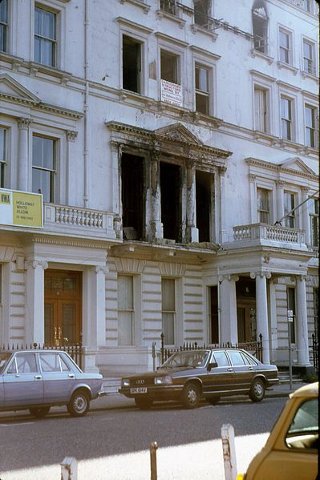The SAS Regiment and the Iranian Embassy Siege

Five years after Prime Minister Edward Heath ordered formation of the special projects team, the anti-hijacking and counter-terrorism wing of the SAS Regiment played the key role in the outcome of the Iranian Embassy Siege. On 30 April 1980, six gunmen from the Democratic Revolutionary Front for Liberation of Arabistan (DRFLA) stormed the Iranian Embassy in London and took 26 people as hostages. Most of the hostages were embassy staff but a few visitors and a police officer who had been guarding the Iranian Embassy were also held by six members of the DRFLA that was fighting for autonomy of the Khuzestan Province in Iran.
The terrorists demanded release of Arab prisoners from jails in the Khuzestan Province and a guarantee that they will be enabled a safe passage out of the United Kingdom. The British government, however, refused to grant a safe passage to the hostage-takers and as a result, the siege continued. Meanwhile, the police negotiated with the terrorists and managed to convince them to release five hostages in return for minor concessions such as broadcasting of their demands by the British media. However, the terrorists eventually became frustrated for failing to reach their objectives and on the evening of the sixth day, they killed one hostage and threw his body out of the building of the embassy. The British government reacted by ordering the SAS Regiment to storm the embassy and rescue the hostages.
Within less than one hour after the killed hostage was thrown from the embassy, two groups of 30 to 35 soldiers from the SAS Regiment abseiled from the roof of the embassy building and forced their entry through the windows. The SAS Regiment action lasted only 17 minutes during which they killed five out of six terrorists. Unfortunately, the terrorists killed one and seriously wounded two hostages during the action but the SAS Regiment managed to rescue 24 from the remaining 25 hostages as well as to capture the surviving terrorist (he was later prosecuted in the court and sentenced to 27 years in jail). The soldiers of the SAS Regiment were afterwards accused that they unnecessarily killed two of the gunmen, however, they were cleared of any wrongdoing following an investigation of the deaths.
The SAS Regiment’s reputation increased dramatically after the action during the Iranian Embassy Siege and the Regiment received an enormous amount of applications by people who were impressed by the action with the codename Operation Nimrod. The SAS Regiment’s service thereafter also became increasingly sought after by foreign governments.
The Iranian government evaluated the outcome of the siege as successful and expressed gratitude to the British government for its reaction to the siege. The embassy building which suffered a serious damage due to a fire that broke out during the hostage rescue action, however, was reopened only in 1993.